For some reason, people just love a good sob story. In the case of the possibly royal Kaspar Hauser, he either fully took advantage of that with fantastical lies, or truly lived an unimaginably tragic life.
1. He Had A Shocking Appearance
Kaspar Hauser made his “debut” in May 1828 in Nuremberg, Germany. Likely around sixteen years old at the time, he looked a complete mess, his clothes distressed and his demeanor just as disheveled. He only carried two handwritten letters on his person. When a shoemaker discovered the lost soul, all the drama began.
2. She Gave Him Up
The shoemaker discovered one of the letters to be sent from Hauser’s mother to an unidentified caretaker. In the note, she named the boy “Kaspar” and claimed that his father, once a member of the cavalry, had passed. That alone, and the fact that his mother gave him up, created enough of a sad story. But that was only the first letter.
 Unknown Author, Wikimedia Commons
Unknown Author, Wikimedia Commons
3. He Didn’t Have Anyone
The other letter came from the caretaker. According to this “anonymous” man, he raised Hauser and taught him the Bible. The boy wanted to be a cavalryman, so he sent him, letter in hand, to the cavalry Captain, saying he could “take him in or hang him". Thankfully, luck was on Hauser's side.
 British Museum, Wikimedia Commons
British Museum, Wikimedia Commons
4. He Couldn’t Communicate
When the shoemaker brought Hauser to the Captain of the cavalry, he man neither took the child or hung him. When the authorities questioned Hauser, he responded inanely, only saying “I want to be a cavalryman, like my father was” and “Horse!” Of course, they kept pressing, but his responses only grew more concerning.
 Gustav Nehrlich, Public domain, via Wikimedia Commons
Gustav Nehrlich, Public domain, via Wikimedia Commons
5. He Cracked
The more the authorities put pressure on Kaspar, the more frustrated he became. He eventually began to cry, responding to their questions with, “Don’t know”. He couldn’t tell them where he came from, who sent him, or who he actually was. Out of reasonable options, they did the only thing that seemed to make sense.
 Werner Herzog Filmproduktion, The Enigma of Kaspar Hauser (1974)
Werner Herzog Filmproduktion, The Enigma of Kaspar Hauser (1974)
6. They Locked Him Up
Concluding that the boy couldn’t possibly care for himself, they placed Hauser under the guardianship of a jailer named Andreas Hiltel. He stayed there for two months, in which Hiltel deemed the boy physically healthy and up to par for his assumed age, even though he initially seemed mentally behind. Even that, though, soon changed unexpectedly.
 Werner Herzog Filmproduktion, The Enigma of Kaspar Hauser (1974)
Werner Herzog Filmproduktion, The Enigma of Kaspar Hauser (1974)
7. His Brain Worked
Hauser's brain worked much better than the townspeople originally thought. The mayor took an interest in Hauser, and reported that the boy not only had a great memory, but also the ability to pick up skills quite easily. The curiosity of the townspeople also grew, and with it came some elaborate theories about where he really came from.
 Werner Herzog Filmproduktion, The Enigma of Kaspar Hauser (1974)
Werner Herzog Filmproduktion, The Enigma of Kaspar Hauser (1974)
8. The People Speculated
One very popular theory about Hauser began to get around. According to the rumor, he actually belonged to a royal line. The idea of a mysterious person turning out to be of royal descent fueled many theories at the time (and even inspired the classic novel, The Man in the Iron Mask). But Hauser’s version held some intriguing details…
 Werner Herzog Filmproduktion, The Enigma of Kaspar Hauser (1974)
Werner Herzog Filmproduktion, The Enigma of Kaspar Hauser (1974)
9. He Might Have Been Royal
This version of Hauser's origin placed him as the child of Charles, Grand Duke of Baden and the adopted daughter of Napoleon (yes, that Napoleon) in 1812. History records the passing of their child in infancy, leaving Charles without an heir of his own. How does Hauser come into play? In the most unexpected way possible.

Sign up to our newsletter.
History’s most fascinating stories and darkest secrets, delivered to your inbox daily. Making distraction rewarding since 2017.
10. They Got The Wrong Baby
Supposedly, someone switched the Duke’s very alive baby (in this theory, Hauser), with an ailing baby shortly after his birth. The culprit accomplished this despite the highest levels of security. The whole thing sounds like something out of a medieval Lifetime movie. And yet, the details continue to get more bizarre.
 François Gérard, Wikimedia Commons
François Gérard, Wikimedia Commons
11. He Missed the Crown
Theorists postulated the mastermind of that plan to be the Countess of Hochberg. By switching the babies, she intentionally secured the throne for her own son, Leopold. Although both dramatic and sensational, no real evidence supports this theory. However, this wasn't the only theory about Hauser floating around.
 Philipp Jakob Becker, Wikimedia Commons
Philipp Jakob Becker, Wikimedia Commons
12. Wolves Raised Him
Another trope that kept folks busy at the time was the idea of the “wolf child”—a person raised wildly on their own in the woods. This seemed to fit Hauser, with his sudden appearance and initial mental deficiencies. Intriguingly enough, though, Hauser soon found himself sharing his own story. No one could have predicted the details.
 Werner Herzog Filmproduktion, The Enigma of Kaspar Hauser (1974)
Werner Herzog Filmproduktion, The Enigma of Kaspar Hauser (1974)
13. He Told All
Back in Nuremberg, Hauser settled into his new life with the jailer and developed his skills. He reportedly developed so well that he soon became capable of explaining his past. By his own account, he spent his early years in a tiny, dark cell all by himself. That alone sounds terrible, but he lacked much more than human connection.
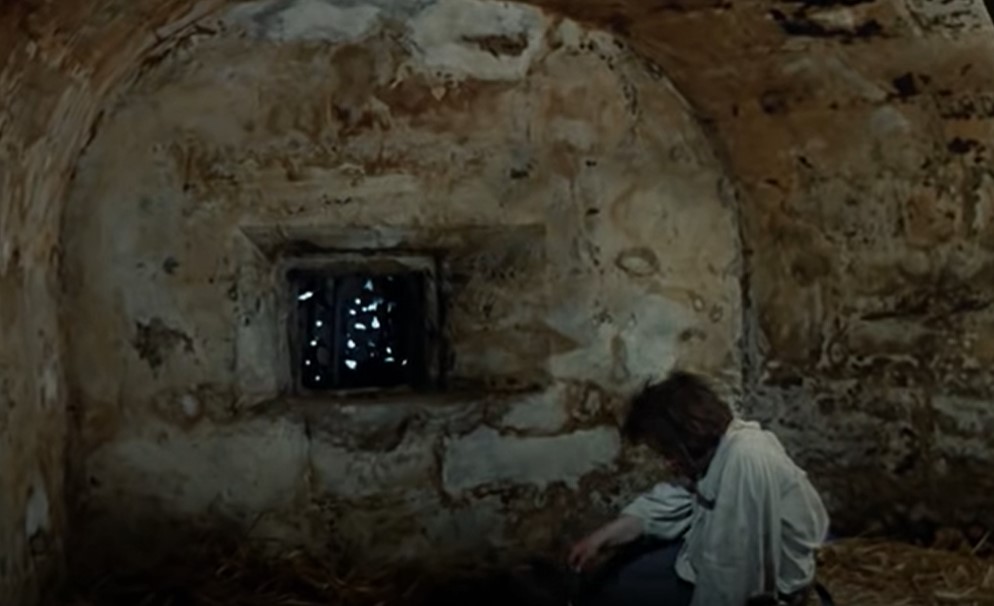 Werner Herzog Filmproduktion, The Enigma of Kaspar Hauser (1974)
Werner Herzog Filmproduktion, The Enigma of Kaspar Hauser (1974)
14. He Didn’t Have Much
Hauser claimed his prison only fit a small bed made of straw, and just a few wooden toys. His food appeared near his bed each morning, and never varied from simple bread and water. There’s no word on how he used the bathroom, but I can’t guess it looked much better. The way his caretaker stayed incognito proved just as creepy.
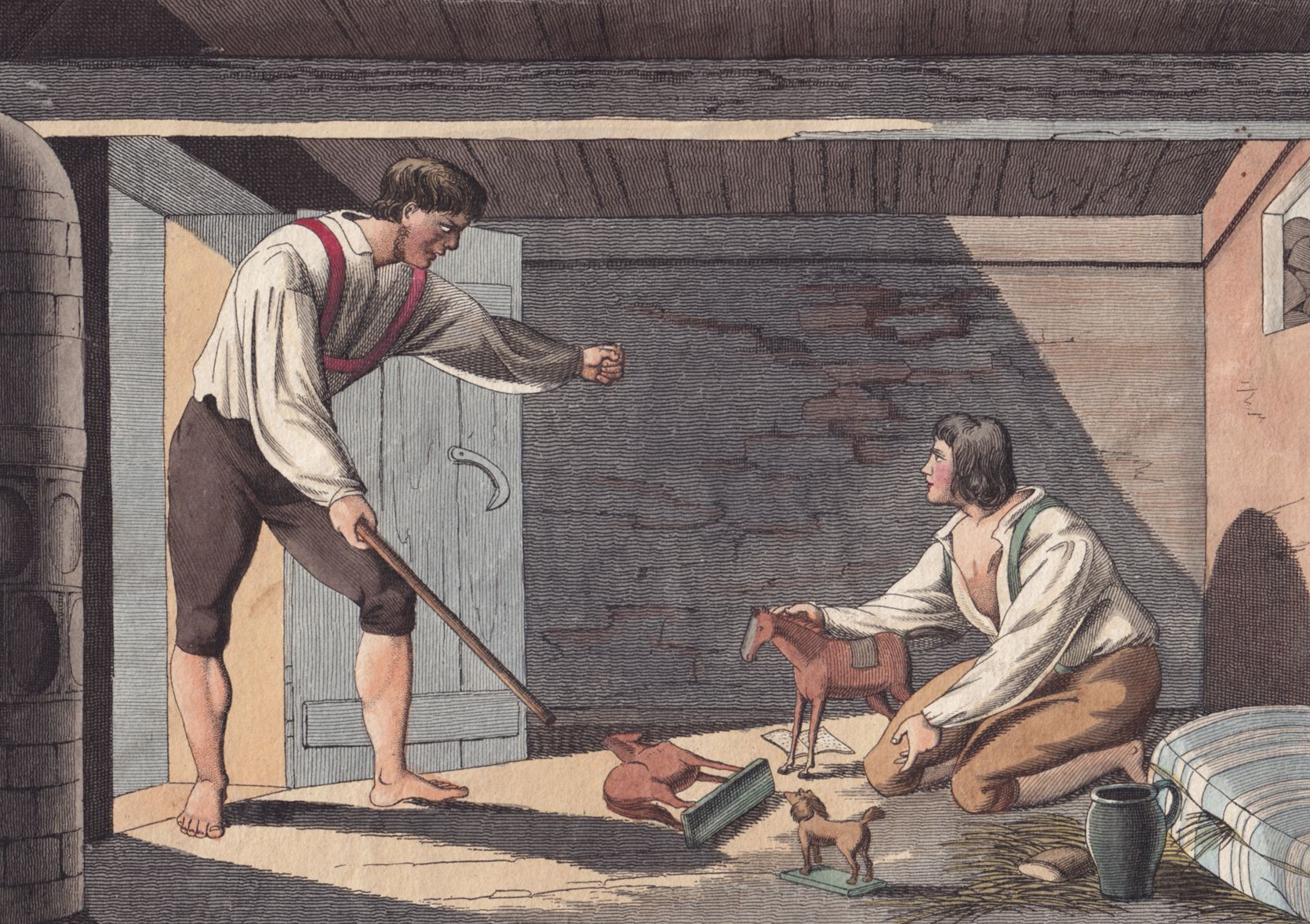 Unknown Author, Wikimedia Commons
Unknown Author, Wikimedia Commons
15. He Stayed Secret
The person responsible for keeping him alive never showed his face. Hauser recalled sometimes tasting something different in the water that made him oversleep. When he awoke from his long slumbers, he found his bed changed and his hair cut. Eventually, the man brought him to Nuremberg and left him there. Somehow.
 Werner Herzog Filmproduktion, The Enigma of Kaspar Hauser (1974)
Werner Herzog Filmproduktion, The Enigma of Kaspar Hauser (1974)
16. The Story Didn’t Align
If you’re keeping track of the details and not totally enthralled by how terrible this sounds, you might find it strange that someone could raise Hauser for over a decade and remain concealed. You wouldn’t be the only one. While his story attracted lots of pity, it also attracted skeptics. As it turns out, they had reason to be suspicious.
 Werner Herzog Filmproduktion, The Enigma of Kaspar Hauser (1974)
Werner Herzog Filmproduktion, The Enigma of Kaspar Hauser (1974)
17. He Seemed Brilliant (Kind of)
Not only did Hauser tell this story of his past, he actually managed to write his autobiography after the jailer took him in. Seemed like quite a feat for someone who just months prior couldn’t say where he’d come from. All inexplicable details aside, people still felt bad for him, which explains his next stroke of fortune.
 Werner Herzog Filmproduktion, The Enigma of Kaspar Hauser (1974)
Werner Herzog Filmproduktion, The Enigma of Kaspar Hauser (1974)
18. They Took Him In
The townspeople of Nuremberg officially took Hauser on as a responsibility of the community. A schoolmaster, Friedrich Daumer, took him in and saw to his care with the financial assistance of the community. Daumer continued to instruct Hauser, who took to the learning like a fish to water. He did a lot for his new ward, but Hauser still paid his dues.
 Werner Herzog Filmproduktion, The Enigma of Kaspar Hauser (1974)
Werner Herzog Filmproduktion, The Enigma of Kaspar Hauser (1974)
19. He Became An Experiment
Reportedly, Daumer had special interest in scientific study, and used his time with Hauser as an opportunity to test some theories. He did experiments with magnets and homeopathic medicine, using Hauser as his lab rat of sorts. Allegedly, though, no real harm came to Hauser under his care. That is, until 1829.
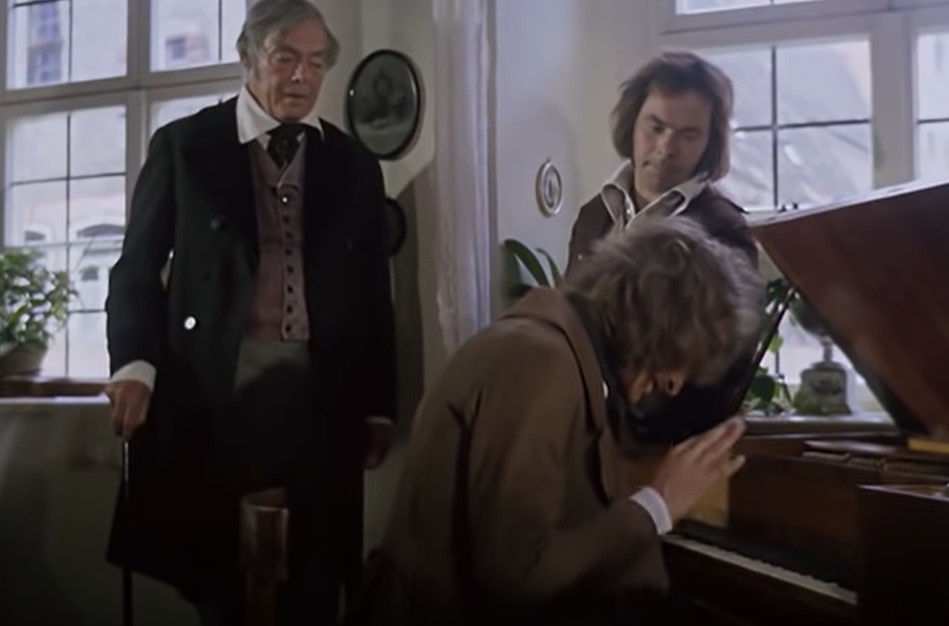 Werner Herzog Filmproduktion, The Enigma of Kaspar Hauser (1974)
Werner Herzog Filmproduktion, The Enigma of Kaspar Hauser (1974)
20. He Got Into Trouble
Hauser got into some serious trouble, or—if you believe his own version of events—trouble went looking for him. In October 1829, Daumer discovered his houseguest in his cellar bleeding from an injury on his forehead. Hauser alleged that a hooded man did it to him, breaking into the home while he used the bathroom. The details grew more sticky.
 Werner Herzog Filmproduktion, The Enigma of Kaspar Hauser (1974)
Werner Herzog Filmproduktion, The Enigma of Kaspar Hauser (1974)
21. His Past Hunted Him
Although Hauser said he didn’t see his assailant’s face, he claimed the voice of the man to be the same voice of the man who kept him imprisoned as a child. This unexplainable “pursuit” and endangerment of his life seemed to fuel the rumors of his royalty. The trail of blood in the house, however, seemed to tell a very different story.
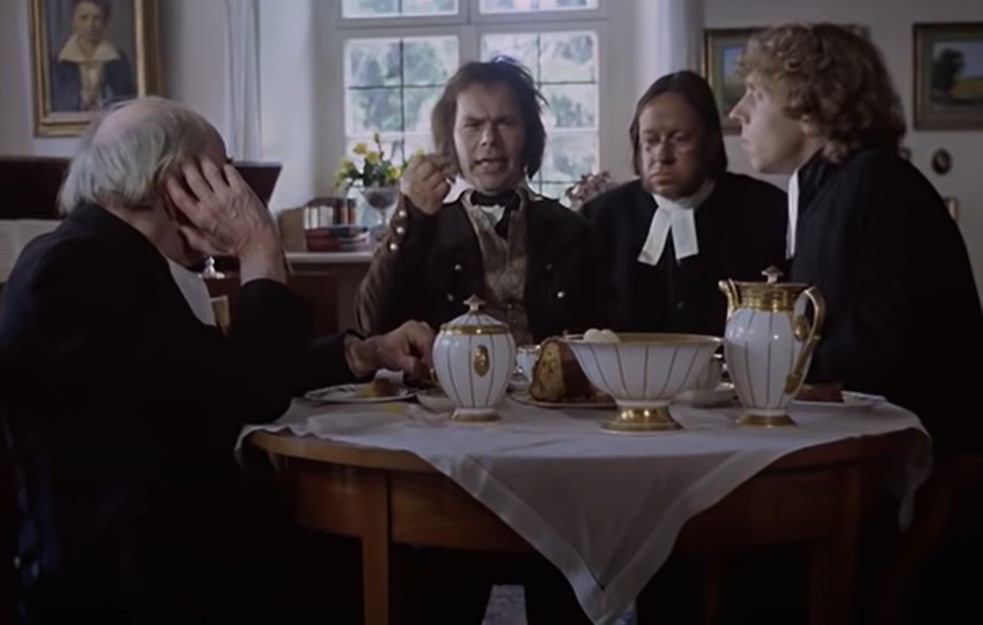 Werner Herzog Filmproduktion, The Enigma of Kaspar Hauser (1974)
Werner Herzog Filmproduktion, The Enigma of Kaspar Hauser (1974)
22. Things Didn’t Add Up
The blood in Daumer’s house trailed from the ground floor to Hauser’s bedroom and finally to the cellar where people eventually found him (notice the lack of blood in the bathroom). This caused his naysayers and critics to describe a very different version of the story, one that painted Hauser himself as the main villain.
 Werner Herzog Filmproduktion, The Enigma of Kaspar Hauser (1974)
Werner Herzog Filmproduktion, The Enigma of Kaspar Hauser (1974)
23. He Seemed Fake
Many thought that Hauser actually planned the whole thing, even to the extent of giving himself the gash on his forehead. This explained the blood, with the idea being that he took his weapon back to his room after inflicting himself then heading to the cellar. It held a ring of truth, considering other notable circumstances.
 Werner Herzog Filmproduktion, The Enigma of Kaspar Hauser (1974)
Werner Herzog Filmproduktion, The Enigma of Kaspar Hauser (1974)
24. He Ruffled Feathers
Reportedly, Daumer and Hauser argued bitterly shortly before the incident took place. The schoolmaster took issue with a habit he believed Hauser accustomed to—lying. No surprises there, I think. So perhaps the situation and need for safety was nothing but a convenient reason to relocate Hauser to a new caretaker.
 Werner Herzog Filmproduktion, The Enigma of Kaspar Hauser (1974)
Werner Herzog Filmproduktion, The Enigma of Kaspar Hauser (1974)
25. He Kept It Up
All suspicions aside, authorities did in fact conclude it best to move Hauser to a new place to keep him secure. He found himself in the care of a local official, Johann Biberbach. He didn’t live out the rest of his days in peace and harmony, though. In fact, the very next year, he got caught in an incident that seemed oddly familiar.
 Werner Herzog Filmproduktion, The Enigma of Kaspar Hauser (1974)
Werner Herzog Filmproduktion, The Enigma of Kaspar Hauser (1974)
26. He Upped The Ante
This time, the whole commotion began with the sound of a shot ringing through his new home. Upon rushing to the scene, his new caretaker found Hauser injured again and bleeding from a wound on his head. Reportedly, he initially shared a story of another attacker. This time around, his story deteriorated much faster.
 Werner Herzog Filmproduktion, The Enigma of Kaspar Hauser (1974)
Werner Herzog Filmproduktion, The Enigma of Kaspar Hauser (1974)
27. He Was Clumsy
Hauser's story had some gaping holes. He said he’d accidentally grabbed the pistol from its spot on the wall when he was attempting to use a chair to grab something just out of reach. So he not only grabbed the weapon by mistake, but just so happened to pull the trigger and graze himself. Or, it was part of his plan all along.
 Werner Herzog Filmproduktion, The Enigma of Kaspar Hauser (1974)
Werner Herzog Filmproduktion, The Enigma of Kaspar Hauser (1974)
28. He Made Enemies
Tensions in Hauser’s relationship with his new keeper soon came to the light. Over time, Biberbach also thought Hauser to be a terrible liar, and called him “full of vanity and spite” among other not so nice things. So, maybe just as he’d hoped would happen, another person stepped in to take over his daily maintenance.
 Werner Herzog Filmproduktion, The Enigma of Kaspar Hauser (1974)
Werner Herzog Filmproduktion, The Enigma of Kaspar Hauser (1974)
29. He Begged The Question
By this point, the people of Nuremberg probably felt intrigued, confused, and even frustrated with their “guest". But somehow, Hauser continued to maintain positive interest in his life and mysterious background. A British noble, Lord Stanhope, tried his hand at Hauser next. His mission, though, seemed more focused.
 Tilman2007, CC BY-SA 4.0, Wikimedia Commons
Tilman2007, CC BY-SA 4.0, Wikimedia Commons
30. He Went Digging
In 1831, Stanhope came to Hauser with renewed energy and the hope to finally uncover the truth of his origin story. He spent copious amounts of time with Hauser, hoping to figure out a way to revive the strange man’s memory. After some time with Hauser, this seemed to pay off in a way that appeared fairly easy to prove.
 Samuel William Reynolds, Wikimedia Commons
Samuel William Reynolds, Wikimedia Commons
31. He Remembered Something
In his conversations with Stanhope, Hauser let a few Hungarian words slip. More than that, though, Hauser reportedly claimed his mother to be the Hungarian Countess Maytheny at least once. This sparked an idea for Stanhope, one he thought would solve the whole mystery. Unfortunately, it didn’t quite turn out as he wanted.
 Werner Herzog Filmproduktion, The Enigma of Kaspar Hauser (1974)
Werner Herzog Filmproduktion, The Enigma of Kaspar Hauser (1974)
32. He Went Home (Maybe?!)
Stanhope took Hauser to Hungary twice, hoping physically being in the place might help him remember more about his background. Stanhope soon discovered, though, that Hauser didn’t recognize a single person, place, or thing there. Or, if he did, he certainly didn’t say so. Eventually, Stanhope could no longer hold out hope.
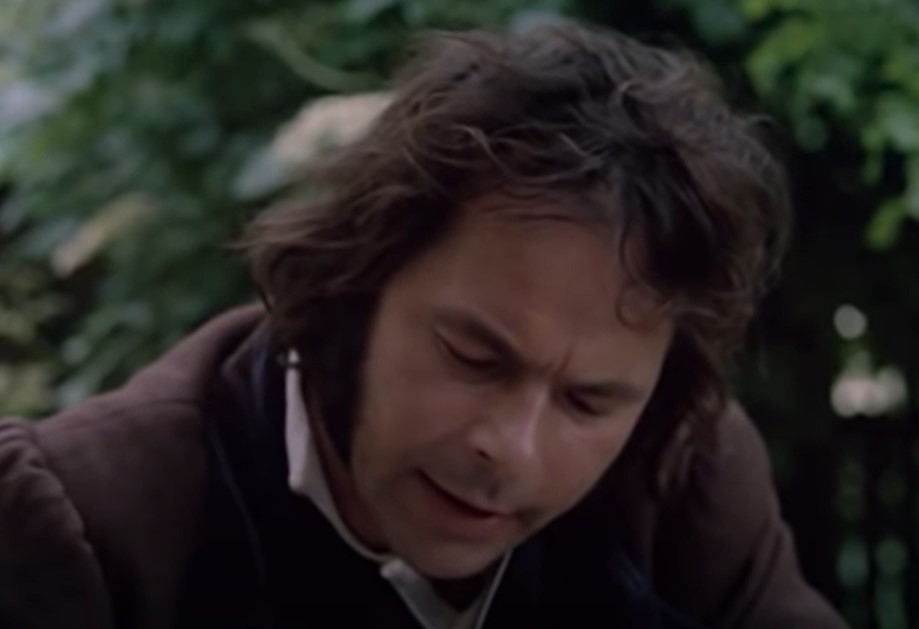 Werner Herzog Filmproduktion, The Enigma of Kaspar Hauser (1974)
Werner Herzog Filmproduktion, The Enigma of Kaspar Hauser (1974)
33. He Gave Up
By the end of the year, Hauser found himself in the care of another schoolmaster, Johann Georg Meyer. Stanhope continued to offer money to care for him, but skipped out on a promise to take him to England, and eventually stopped visiting him all together. It spelled the beginning of the end for Hauser and his antics.
 Werner Herzog Filmproduktion, The Enigma of Kaspar Hauser (1974)
Werner Herzog Filmproduktion, The Enigma of Kaspar Hauser (1974)
34. Things Got Dark
In another installment of a recurring trend, Hauser didn’t get along well with his new steward. Much like those who came before him, Meyer quickly found himself frustrated with Hauser’s tendency to lie and come up with excuses for his undesirable behavior. That wasn’t the only issue Hauser found himself forced to grapple with.
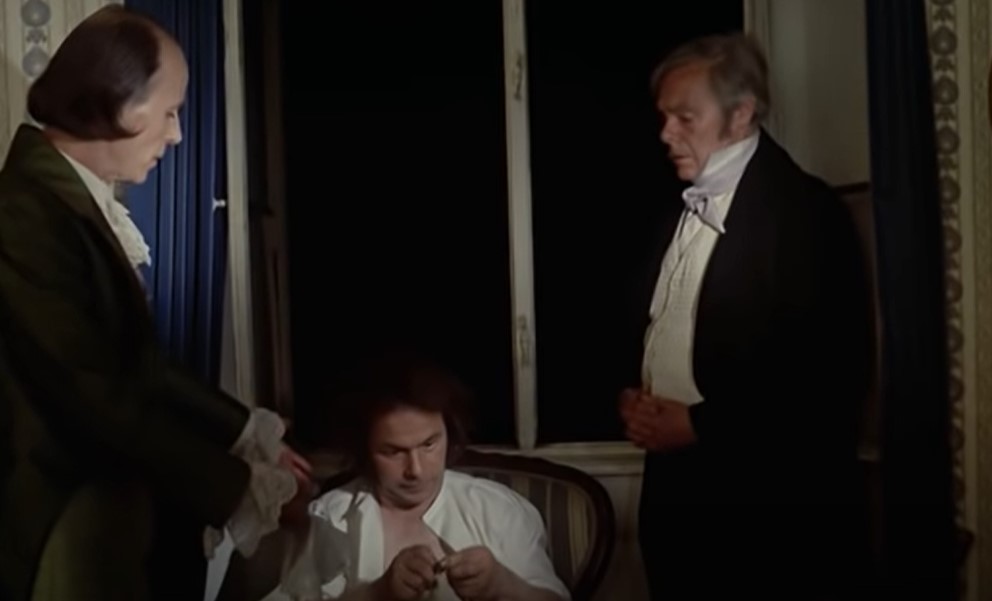 Werner Herzog Filmproduktion, The Enigma of Kaspar Hauser (1974)
Werner Herzog Filmproduktion, The Enigma of Kaspar Hauser (1974)
35. He Lost A Friend
One of Hauser’s steady financial supporters, Anselm von Feuerbach, passed in 1833. While Hauser surely benefited from the man's funds, he also seemed to consider him somewhat family (although he’d eventually turned on Hauser too, but more on that later). Backed into a corner, Hauser came up with a more elaborate plan than ever.
 Werner Herzog Filmproduktion, The Enigma of Kaspar Hauser (1974)
Werner Herzog Filmproduktion, The Enigma of Kaspar Hauser (1974)
36. He Did It Again
Hauser’s final charade began in December 1833, when he arrived back at Meyer’s home bleeding terribly. He claimed someone he didn’t recognize attacked him again. To complete the scenario, he claimed the person did so while trying to give him a bag of some sort. The following investigation turned up peculiar details.
 Werner Herzog Filmproduktion, The Enigma of Kaspar Hauser (1974)
Werner Herzog Filmproduktion, The Enigma of Kaspar Hauser (1974)
37. The Cat Got Out The Bag
When authorities returned to the scene of the skirmish, they did indeed find a bag. A note inside revealed a weird message written in German. In it, the supposed guilty party named himself and where he came from. It’s not how most people commit wrongs, but perhaps it's a good time to remember some other letters…
 Werner Herzog Filmproduktion, The Enigma of Kaspar Hauser (1974)
Werner Herzog Filmproduktion, The Enigma of Kaspar Hauser (1974)
38. It Didn’t Make Sense
Remember the letters Hauser showed up with in Nuremberg back when all he wanted to do was be in the cavalry? Continued analysis showed a disturbing fact—both letters appeared in the same handwriting. Studying handwriting might seem ambiguous, but another detail of their contents really blows up the whole thing.
 Werner Herzog Filmproduktion, The Enigma of Kaspar Hauser (1974)
Werner Herzog Filmproduktion, The Enigma of Kaspar Hauser (1974)
39. He Got The Math Wrong
One of the letters that arrived with him to Nuremberg was addressed to an army captain there at the time. The issue came with the fact that the letter itself claimed to be written in 1812, before the army captain lived there. If you ask me, it seems like Hauser faked it from the beginning. But back to the impending end...
 Werner Herzog Filmproduktion, The Enigma of Kaspar Hauser (1974)
Werner Herzog Filmproduktion, The Enigma of Kaspar Hauser (1974)
40. The Evidence Was Damning
The all-too-revealing note at the scene of the scenario Hauser described was also folded in a very specific triangular way he often folded notes himself. Furthermore, authorities found the message filled with the type of errors common to Hauser. If that doesn’t convince you, even more details pointed all fingers back at him.
 Werner Herzog Filmproduktion, The Enigma of Kaspar Hauser (1974)
Werner Herzog Filmproduktion, The Enigma of Kaspar Hauser (1974)
41. He Tripped Up
At the scene of the distressing incident, there was only one set of footprints in the snow where Hauser claimed someone had attacked him. And upon study of the actual wound, investigators agreed that Hauser did, in fact, cause his injury himself. The evidence told all, but they never got the chance to hold Hauser accountable.
 Werner Herzog Filmproduktion, The Enigma of Kaspar Hauser (1974)
Werner Herzog Filmproduktion, The Enigma of Kaspar Hauser (1974)
42. He Got In Too Deep
Hauser was in too deep—as in, he literally cut himself too deeply to survive. He passed just three days after the entire fiasco. The townspeople buried him in Ansbach, gracing his headstone with a quote just as mysterious as his entire life there—“Here lies Kaspar Hauser, riddle of his time”. But if you thought his story ended there, you thought wrong.
 Michael Zaschka, Mainz / Fulda, Wikimedia Commons
Michael Zaschka, Mainz / Fulda, Wikimedia Commons
43. They Turned On Him
Stories about Hauser’s life, as well as theories about his true backstory, continued to entertain curious audiences for years to come. Shortly after his passing, however, some of the persons who’d been close to him during his life came forward with astounding admissions, the kind of pointed accusations they seemingly couldn’t manage when Hauser lived.
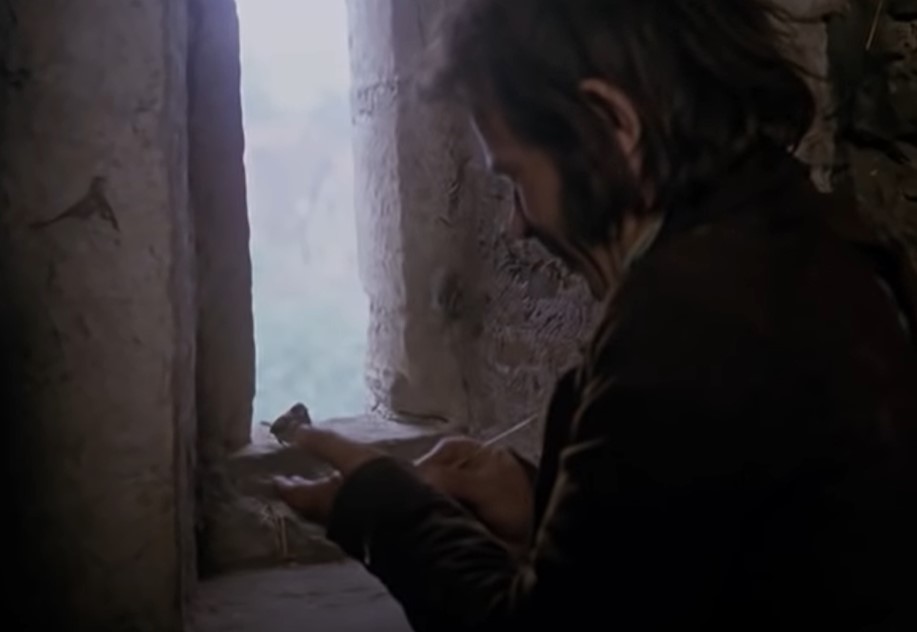 Werner Herzog Filmproduktion, The Enigma of Kaspar Hauser (1974)
Werner Herzog Filmproduktion, The Enigma of Kaspar Hauser (1974)
44. He Fessed Up
Perhaps you remember Lord Stanhope, so determined to find the truth about Hauser that he took him to Hungary and promised a trip to England as well. After Hauser passed, he authored an entire book of evidence discrediting Hauser’s stories. He claimed he felt it his "duty openly to confess that I had been deceived". He didn’t turn out to be the only one.
 Werner Herzog Filmproduktion, The Enigma of Kaspar Hauser (1974)
Werner Herzog Filmproduktion, The Enigma of Kaspar Hauser (1974)
45. His Friend Insulted Him
In my personal opinion, all Feuebach really did was call things as he saw it. Technically, he remained a supporter for Hauser throughout his life, and passed before him. However, behind Hauser’s back, he called him “a smart scheming codger, a rogue, a good for nothing that ought-to-be killed". But was it really all a lie?
 Werner Herzog Filmproduktion, The Enigma of Kaspar Hauser (1974)
Werner Herzog Filmproduktion, The Enigma of Kaspar Hauser (1974)
46. They Kept Looking
Doctors examined Hauser’s brain after his passing, likely searching for a scientific explanation for his behavior. One doctor thought his brain was smaller than usual and postulated Hauser might be an epileptic. Another doctor refuted this claim, though, declaring him totally normal. Maybe the problem wasn’t something easy to see.
 Werner Herzog Filmproduktion, The Enigma of Kaspar Hauser (1974)
Werner Herzog Filmproduktion, The Enigma of Kaspar Hauser (1974)
47. It Should Have Been Worse
It’s not at all surprising that Hauser's case raised great psychological interest. One one end, psychologists considered his own version of his backstory to be nearly impossible. By their studies, if he’d really been kept in isolation as he’d claimed, he’d be much more mentally underdeveloped. That didn’t explain why he lied, though.
 Werner Herzog Filmproduktion, The Enigma of Kaspar Hauser (1974)
Werner Herzog Filmproduktion, The Enigma of Kaspar Hauser (1974)
48. He Might Not Be To Blame
Some psychologists theorize that Hauser actually suffered from a personality disorder characterized by deep paranoia. That would explain his histrionic behavior, and perhaps even the way he fed off the pity of others. Whatever the reason, he ultimately pulled off an incredible level of deception, one that went down in history.
 Werner Herzog Filmproduktion, The Enigma of Kaspar Hauser (1974)
Werner Herzog Filmproduktion, The Enigma of Kaspar Hauser (1974)
49. He Never Left
A statue of Hauser still stands in Ansbach, Germany today, erected in the 1940s. It refers to him as the “Child of Europe,” presenting his mystifying life as one of interest, and perhaps as an icon of European culture and lore at the time. Not too surprisingly, Hauser’s story ultimately reached far past his chosen home in Germany.
 Michael Zaschka, Mainz / Fulda, Wikimedia Commons
Michael Zaschka, Mainz / Fulda, Wikimedia Commons
50. His Story Lives On
Hauser’s mysterious life continues to live on, especially through the arts. He’s inspired books by critically acclaimed authors like Herman Melville, and became the muse for various movies and television episodes. They say crime doesn’t pay, but perhaps a lie or two can get you a little notoriety—or at least a punchy fact article written in your honor.
 Werner Herzog Filmproduktion, The Enigma of Kaspar Hauser (1974)
Werner Herzog Filmproduktion, The Enigma of Kaspar Hauser (1974)












